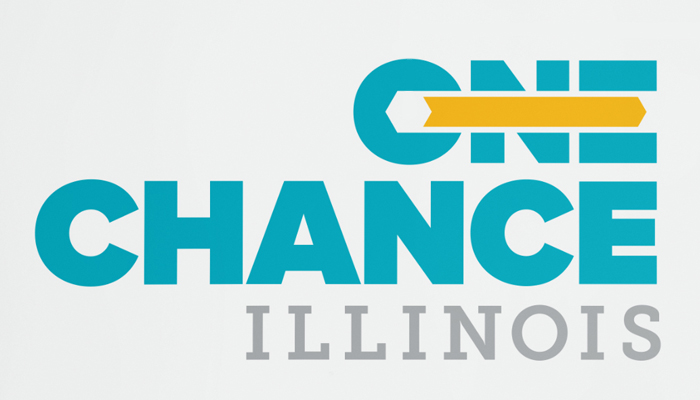Illinois has just pulled off a coup by passing the largest new program in the country to offer lower-income families scholarships to attend private schools. The funding comes from donations made by individuals and businesses who receive a 75-cents-on-the-dollar tax credit when they give to scholarship-granting organizations statewide.
Even the bill’s supporters did not expect it to pass, but a perfect storm of politics, budget crises, a politically savvy cardinal, and patient philanthropy pulled it off. Here’s how it happened.
 “There were a lot of naysayers, and they were right to be skeptical,” says James Perry Jr., co-founder of private equity firm Madison Dearborn Partners, and a longtime supporter of better education options for disadvantaged kids. “Versions of school choice had surfaced before in Springfield only to be dashed by a coalition of Democrats and Republicans opposed to the very idea.”
“There were a lot of naysayers, and they were right to be skeptical,” says James Perry Jr., co-founder of private equity firm Madison Dearborn Partners, and a longtime supporter of better education options for disadvantaged kids. “Versions of school choice had surfaced before in Springfield only to be dashed by a coalition of Democrats and Republicans opposed to the very idea.”
But Perry and an early group of donors—including seed funders John Buck, Bob Huffman, Mike Keiser, and John Russell—came together to form One Chance Illinois to push for a statewide tax credit for scholarships. Several national funders also joined in, including the Conrad Hilton Foundation and Laura and John Arnold Foundation, which helped support early research and polling. Donors collectively invested nearly $5 million in nonprofit education efforts, c(4) lobbying, and political giving over several years.
Most education reformers didn’t see Illinois as ground zero for a major school-choice initiative. But the election of Bruce Rauner to the governor’s mansion in 2014 provided an opening. An investor and major education philanthropist himself, Rauner campaigned on the idea of an education tax credit. He also had other priorities, though, and there was still sizable resistance in the heavily Democratic state legislature.
Meanwhile, school-choice advocates in New York had just come within an eyelash of achieving a similar school-choice victory. While their measure was unsuccessful, it seemed that their “blue-state strategy” was onto something. Borrowing from New York’s playbook, Illinois funders, advocates, and parents built an extensive coalition of religious organizations, community groups, and, surprisingly, some blue-collar labor unions (not teacher unions) to advocate for the reform. The reasoning was simple—kids of firefighters, police officers, and other union members stood to benefit considerably from a scholarship program. Some Democratic leaders were attracted in this way.
Illinois’s deep budget crisis was a crucial factor in passage of the tax credit. As the state’s long-building budget crisis deepened, the governor was steadfast in his opposition to new taxes or adding to the state’s deep deficits. In the 2018 state budget negotiations, a rewrite to fix an inequitable sharing of state funding for school districts reached the top of the agenda. Hundreds of millions of dollars in K-12 funding were on the table.
One Chance Illinois was ready, knowing that compromises between the governor and the Democratic-controlled House and Senate would be necessary to finalize a budget. “We believed that a tax-credit scholarship bill properly structured to appeal to Democrats sympathetic to providing better school options for low-income families could be the hinge,” says Perry. “It took a couple more years to materialize than we expected, but we were right that tax-credit scholarships were key to breaking the negotiating impasse.”
One additional catalyst was the involvement of Cardinal Blaise Cupich, Archbishop of Chicago. Cupich is known to have a knack for politics and also has nearly 79,000 students attending Archdiocesan schools who might qualify for scholarships. He served as an honest broker among the politicians, and an agreement was reached that created the new scholarship as part of a compromise that broke the budget impasse. Governor Rauner signed the Invest in Kids Act in August 2017, and at the end of January families began applying for scholarships that will be usable in the 2018-19 school year. Servers crashed under heavy demand, with three requests piling up for each of the estimated 15,000 available scholarships.
The bargain creating the scholarships sunsets after five years. If it is to be extended, or copied by other states, the public will need to be shown that the program is having an impact. In politically charged Illinois, organized attacks on the scholarships are guaranteed, so supporters must ramp up policy, communications, and public-relations work to sustain the program over the long run.
This surprise breakthrough, though, already offers important lessons for donors. First, if you can mobilize strong leaders and a smart strategy, don’t be paralyzed by conventional wisdom that says change is impossible. Second, never underestimate parents hungry for a better education for their kids. Third, don’t stop at logical arguments and whitepapers in justifying a reform—advocacy and political pressure also have to be marshaled. Last, be willing to take risks and buck the advice that says you should only invest in what’s “proven.”
Illinois advocates were able to leverage a relatively modest philanthropic investment of around $5 million to achieve $500 million in scholarship funding over five years. Their victory should give hope to school-choice supporters in many other places. For, in this case, Frank Sinatra’s famous line certainly applies: “If I can make it there, I’ll make it anywhere.”
— Anthony Pienta
Anthony Pienta is director of K-12 education programs at The Philanthropy Roundtable.
This post originally appeared at PhilanthrophyRoundtable.org.


